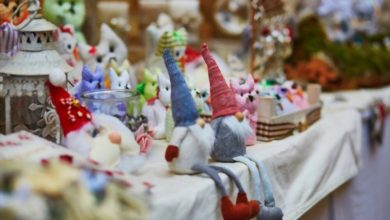Augusta Savage Biography, Life, Interesting Facts

Augusta Savage, whose original name was Augusta Christine Fells was a black American sculptor born on February 29, 1892. She began modeling at an early age using red clay soil at her home in Florida. Augusta was a Harlem Renaissance sculptor who was also an influential advocate for equal human rights. In addition, she was an art teacher, and her art studio, Savage Studio of Arts and Crafts in Harlem was an inspiration to many artists who later became famous.
Childhood and Early Life
Augustus Fells was born to a Methodist minister, Edward Fells and Cornelia Murphy on February 29, 1892, in Green Cove Springs, Florida. As a child, she began modeling using red clay in her hometown. She mostly made small animal sculptures. Her father, a Methodist minister was however against his daughter’s love for art. She got whipped most of the time for modeling as his father believed making sculptures was a sinful practice.
Despite the several objections and efforts by her father to stop her, Augusta could not help but make more sculptures. In 1915, when her family moved to West Palm Beach, Florida, she faced a new challenge; lack of clay. Savage eventually found a local potter who gave her some materials. She then entered a county fair where her work was great and well received. Besides winning a prize, she also got the support of George Graham Currie, the fair’s superintendent who motivated her to embrace and study art.
Her family also embraced her love for sculpturing and her father allowed her to start teaching an art class, which was mostly for modeling. This was the beginning of her lifelong devotion to teaching art. In 1919, Augustus Fells was given a booth at the county fair at Palm Beach where she won the first prize of $25 and an award for showcasing the most original exhibit.
Also read – Tips For Online Coin Auction Enthusiasts
Education and early life in a career
Augustus Fells got a recommendation letter from George Graham, the superintendent of the Palm Beach County fair for Solon Borglum, a sculpture she had made. Borglum however declined to accept her as a student in his school but told her to apply to Cooper Union, New York City where she was accepted in October 1921.
Cooper Union was a great place for her since it did not charge tuition fees. She also got a scholarship to aid her with all her living expenses in the same institution. She did so well, completing her course in only three years instead of four.
In 1923, while still at Cooper Union, Augustus Fells applied for an art program that was sponsored by the French government. Her application was however declined because of her race. She was really mad and had so many questions for the committee. This was to be the revolutionary experience that would influence her life and work great. This prompted, Hermon Atkins, a sculptor who was also part of the committee, to invite her to study with him in the Long Island studio.
Shortly after, Augustus Fells began making a name for herself. Her works during this time include sculptures of famous African-Americans like W. E. B. Du Bois and Marcas Garvey. Both pieces were awarded for their uniqueness, power, and dynamism. She later earned a scholarship to the Royal Academy of Fine Arts, Rome in 1925. She was however unable to attend since she could not raise funds for her living expenses and travel. The scholarship only covered tuition.
After finishing her studies at Cooper Union, Augustus Fells worked at a steam laundry shop in Manhattan. This was aimed to support her family and save for her studies in Europe. Her home had been destroyed by a huge hurricane and her father had suffered a stroke. The family had to move into her small apartment on West 137th street.
Augusta’s talents and works became widely known to the African-American community who organized fundraising ceremonies in Harlem and Greenwich village. This was to help her raise funds for travel and living during her study abroad. Many African-American teachers from Florida A and M also sent her money for her studies abroad.
In 1929, she got a Julius Rosenwald fellowship award for a sculpture of her nephew which she named ‘Gamin’.
Awards and Achievements
Augustus Fells went to Paris for some time where she had an exhibition of her many works at the Grand Palais. This earned her a second Rosenwald fellowship with which she got admission to a leading art school in Paris, the Académie de la Grande Chaumiére. In addition, she also earned a Carnegie Foundation grant that allowed her to travel to many other European countries. With this, she traveled to Germany, France, and Belgium doing research in museums and cathedrals.
Later work
In 1931, Augustus Fells went back to the United States. She continued with her work having been made ready by her studies and all her exhibitions abroad. She did her work despite The Great Depression. In 1932 due to a lack of commissions, she started to teach art and set up her studio. Her many students are well-known artists including Norman Lewis and Gwendolyn Knight. In 1934, she became the first black woman to be in the National Association of Women Painters and Sculptors.
In 1939, Augustus Fells received a contract from the 1939 New York World’s fair. She sculptured ‘Life Every Voice and Sing’, which is also known as ‘The Harp’. This piece was inspired by James Weldon and Rosamond Johnson’s song. ‘The Harp’ was a 16 feet tall sculptor that was the most popular during the fair. She sold many small metal souvenirs and postcards during this time.
Later in life
Augustus Fells later opened her own galleries whose exhibitions were attended and reviewed by many. She however closed the two galleries because of few sales. This made her move to a farm in Saugerties, New York, where she lived working on her mushroom farm up to 1960.
Personal life and Legacy
At the early age of 15, in 1907, Augustus Fells was married to John T. Moore. They then had a daughter, her only child who was born in 1908. Shortly after, her husband passed on. She later married again to James Savage, a carpenter, in 1915. They were together for a few years until they divorced in their early 20s. She did not drop the name Savage, she however used it for the rest of her life.
Her last marriage was in 1923 when she got married to Robert Lincoln Poston, who was a protégé of Garvey. He later died as a result of pneumonia in 1924 when he was aboard a ship returning home from Liberia.
Her famous works include; Gamin, Busts of W. E. B Dunois and Marcus Garvey, the TomTom, The Abstract Madonna, Envy, Lift Every Voice and Sing (also known as ‘The Harp’), and the sculptural interpretation of Negro Music. Augusta Savage began her first public fight for equal rights after her application for an art program which was sponsored by the French government was declined because she was black despite having all the meeting qualifications. This prompted sculptor Hermon Atkins MacNeil who was a renowned artist to invite her to study with him.
After completing her studies at Cooper Union in New York City, she became widely known as a sculptor during the Harlem Renaissance. This made her earn scholarships to study abroad. Her artistic style can be characterized as very sensitive, realistic, and expressive.
Disease and death
Augustus Fells succumbed to cancer on March 26, 1962, in New York City. She will be remembered as an incredible artist, art teacher, and activist.
Check out the upcoming auctions of any artist on the auction calendar



![Photo of Why is Cinema HD V2 not working [Fix May 2022]](https://wizarticle.com/wp-content/uploads/2022/05/Untitled-Design-2-390x220.jpg)

